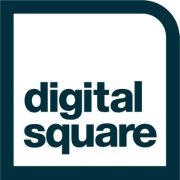DHIS2: Difference between revisions
(Created page with "=DHIS2= DHIS2 is an open source, web-based platform for data collection, visualization, analysis, sharing and management of both aggregate and individual-level data, including mobile and offline data collection using the DHIS2 Android app. DHIS2 is most commonly used as a Health Management Information System (HMIS), but it is also increasingly used in related domains such as health logistics and supply chain management. In many countries, the organizational unit hierarch...") |
|||
| Line 21: | Line 21: | ||
**[https://www.oecd.org/development-cooperation-learning/practices/scaling-technology-driven-innovation-successfully-a6ef90b6/ OECD Tips: Scaling technology-driven innovation successfully] | **[https://www.oecd.org/development-cooperation-learning/practices/scaling-technology-driven-innovation-successfully-a6ef90b6/ OECD Tips: Scaling technology-driven innovation successfully] | ||
**[https://www.frontiersin.org/articles/10.3389/fpubh.2022.715356/full Lessons learned for surveillance system strengthening through capacity building and partnership engagement in post-Ebola Guinea, 2015 -2019] | **[https://www.frontiersin.org/articles/10.3389/fpubh.2022.715356/full Lessons learned for surveillance system strengthening through capacity building and partnership engagement in post-Ebola Guinea, 2015 -2019] | ||
*Check out other digital health tools on our [[global goods list]]. | |||
Revision as of 11:54, 21 March 2023
DHIS2
DHIS2 is an open source, web-based platform for data collection, visualization, analysis, sharing and management of both aggregate and individual-level data, including mobile and offline data collection using the DHIS2 Android app. DHIS2 is most commonly used as a Health Management Information System (HMIS), but it is also increasingly used in related domains such as health logistics and supply chain management. In many countries, the organizational unit hierarchy in DHIS2 serves as the de facto Master Facility List. DHIS2 is designed for interoperability, is commonly integrated with other software and data sources, allowing it to serve as a data warehouse and platform for triangulation and cross-program data analysis. The core DHIS2 software development is managed by the HISP Centre at the University of Oslo, which also coordinates a global network of 17 in-country and regional HISP groups that provide long-term direct support and capacity building to ministries of health and local implementers of DHIS2.
Approach
DHIS2 is focused on meeting the needs of public health systems and health workers in low- and middle-income countries to be able to collect and use data related to health programs. This includes both aggregated data for planning, monitoring, decision making and evaluation of programs, and individual-level data for patient follow-up and health worker support. In addition to health program data, DHIS2 is also used to collect, manage and analyze data in related areas such as health logistics and supply chain, and in health-related and health-adjacent domains such as One Health, Agriculture, Climate, and Education.
DHIS2 is used at all levels of the health system. Health workers at facility and community levels capture data and can use DHIS2 analytics tools, decision support and notification features to make their work more efficient. Supervisors can review and approve data, including performing data quality checks and use analytic outputs for supervision. Program managers and district health officers monitor and evaluate programs and district-wide health data, while surveillance officers can use DHIS2 to trigger alerts and take action. National-level stakeholders use DHIS2 dashboards to make informed decisions. Administrative users customize and maintain the system to ensure that it meets local and programmatic needs. DHIS2 software is designed and implemented in collaboration with the network of regional HISP groups, who work directly with in-country partners in Ministries of Health and other organizations to ensure that DHIS2 understands their pain points and provides a platform that meets the requirements of real-world use cases in low- and middle-income countries.
Implementations
DHIS2 is the world's largest Health Management Information System platform and is currently in use in more than 73 low- and middle-income countries, 69 are deployed at national scale. DHIS2 is also used by national health authorities and international health programs and organizations (such as WHO, PEPFAR, The Global Fund, Gavi) for management of health programs related to specific diseases, such as HIV, TB, Malaria, and others. In addition, during the COVID-19 pandemic, 55 countries rapidly deployed or extended DHIS2 for national pandemic response and/or vaccination. National implementations of DHIS2 typically include routine health data from all major public health programs, collected at the facility level (or at the district level where infrastructure is limited) and aggregated upward through organizational hierarchy. More than 70 countries have implemented the DHIS2 Tracker data model for individual-level data, to manage longitudinal records for case-based disease surveillance programs, patient health records in e-Registry systems and more. The DHIS2 Android app, which functions as an offline-first data collection tool, allows the system to be further extended to areas with low internet connectivity, and is now in use in more than 30 countries.
Resources
- Website: http://dhis2.org/
- Source Code: https://github.com/dhis2
- Articles:
- Routine Use of DHIS2 Data: A Scoping Review
- DHIS2 as a tool for health impact assessment in low-resource settings: examining opportunities for expanding use of routine health data (2018)
- Primer on Digital Solutions for COVID-19 Vaccination Service Delivery: Data and digital health use cases and tools to support immunization service delivery by UNICEF/WHO/DICE
- Solutions for COVID-19 Response: An assessment of digital tools for rapid scale-up for case management and contact tracing by Johns Hopkins Bloomberg School of Public Health, JHU Global mHealth Initiative:
- Launching DHIS2 Pathfinding Pilots
- OECD Tips: Scaling technology-driven innovation successfully
- Lessons learned for surveillance system strengthening through capacity building and partnership engagement in post-Ebola Guinea, 2015 -2019
- Check out other digital health tools on our global goods list.
